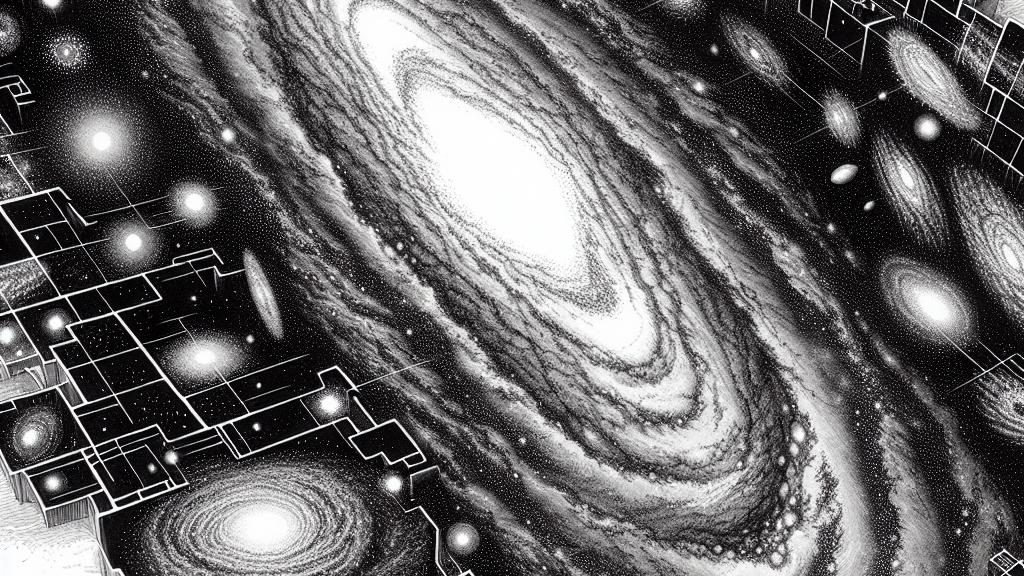Discovering Quipu: The Largest Structure in the Universe
Overview
- Quipu is the largest superstructure ever identified in the universe, revolutionizing our understanding of cosmic formations.
- With a staggering mass of 200 quadrillion solar masses, it truly redefines our perspective on scale in the cosmos.
- Exploring Quipu is essential for unraveling mysteries surrounding galaxy formation and the intricate fabric of the universe.

What is Quipu?
Quipu is not just another cosmic structure; it’s a remarkable testament to the vastness of our universe. Imagine a sprawling framework that stretches over 400 megaparsecs, translating to an eye-watering 1.3 billion light-years—an expanse so grand it's almost unfathomable! This behemoth packs in a jaw-dropping mass of 200 quadrillion solar masses, making it comparable to the mass of millions of suns all pooled into one colossal entity. Named after an ingenious Incan record-keeping method that used knotted strings, Quipu embodies the connections and collections of matter on a galactic scale. This massive structure contains about 45% of the galaxy clusters and 30% of all visible galaxies, illustrating its dominance in the cosmic landscape and offering clues that could illuminate our understanding of the entire universe.
The Importance of Quipu
So, why is Quipu crucial? Its significance extends far beyond its massive size, touching core questions about how our universe evolves. Think of it as the cornerstone in a vast cosmic puzzle! Massive structures like Quipu orchestrate a symphony of gravitational forces, shaping not only how galaxies cluster but also how they develop over cosmic time. For instance, its interactions with other massive structures, such as the Shapley supercluster, create dynamic scenarios that illuminate the dance of dark matter and dark energy in our universe. Understanding Quipu’s influence provides insights akin to discovering that a giant tree not only nurtures its immediate environment but also affects distant landscapes, revealing the interconnectedness of celestial formations. This knowledge is vital in refining our cosmological models and expanding our horizons regarding the ways galaxies form, collide, and age.
The Research Behind Quipu
The groundbreaking research titled 'Unveiling the largest structures in the nearby universe: Discovery of the Quipu superstructure,' spearheaded by the brilliant Hans Bohringer from the Max Planck Institute, marks a pivotal moment in astronomy. This study doesn’t merely catalog data; it endeavors to illuminate our understanding of the cosmos and chart undiscovered territories. By utilizing X-ray emissions from hot gases in nearby galaxy clusters, researchers are metaphorically drawing lines on the starry fabric of the universe! Each X-ray pathway serves as a beacon, guiding scientists to unveil the massive cosmic structures hidden in plain sight. The implications of this research extend to refining our comprehension of the cosmic microwave background, the ancient glow from the Big Bang that still lingers in the cosmos. As we unveil the secrets of Quipu, we inch closer to a profound understanding of the universe’s evolution and its many enigmas, leading us to reconsider everything we thought we knew about the cosmos.

Loading...